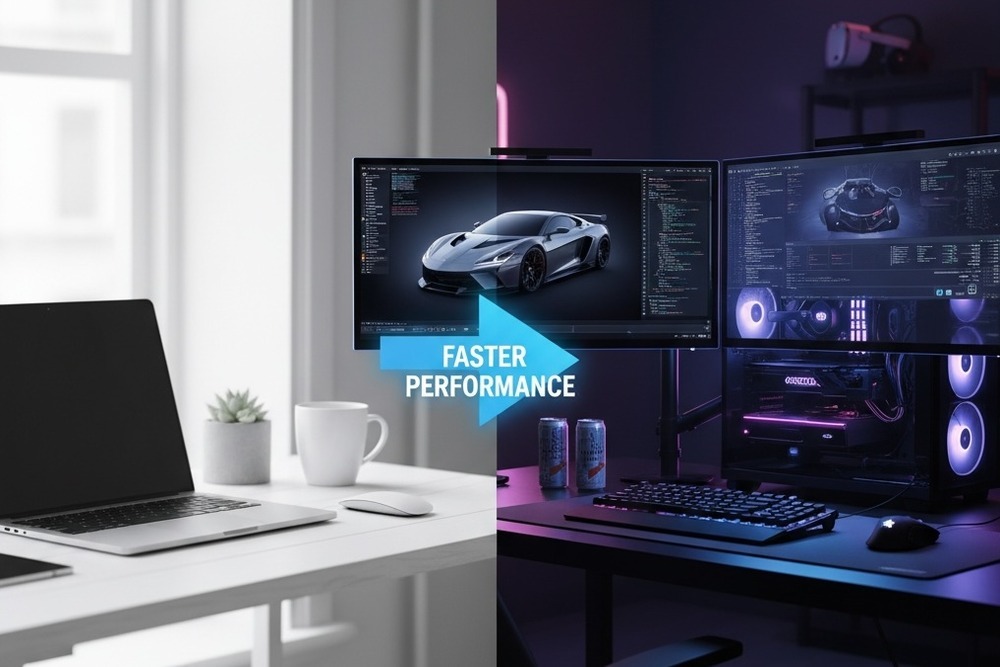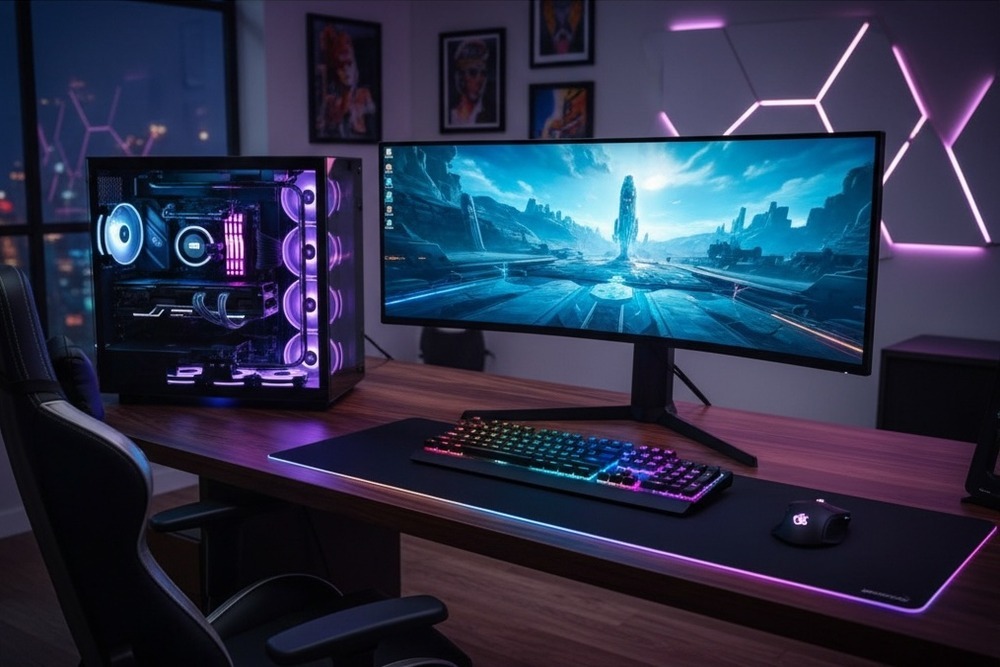The Comeback of Desktop PCs: Why Bigger Is Better Again
Harrison Green
2025-10-10
6 min read

For years, the tech world seemed convinced that desktop computers were destined for obsolescence. Laptops became thinner, tablets more powerful, and smartphones increasingly capable. The narrative suggested that portability would always trump performance, and that the bulky desktop tower was a relic of computing's past. However, 2024 and 2025 have told a different story entirely. Desktop PCs are experiencing a remarkable renaissance, and the reasons behind this comeback reveal fundamental shifts in how we work, play, and create in the modern digital landscape.
The Performance Revolution That Changed Everything
The most compelling argument for desktop PCs lies in their raw computational power. While laptops have certainly improved over the years, they remain constrained by thermal limitations and power consumption requirements. Desktop systems, unburdened by these restrictions, can house the latest high-performance processors and graphics cards that would quickly overheat in a laptop chassis. This performance advantage has become increasingly important as software demands have grown more intensive. Video editing applications now routinely work with 4K and 8K footage, requiring substantial processing power and memory. Similarly, 3D rendering, machine learning applications, and complex data analysis tasks benefit enormously from the multi-core processors and dedicated graphics hardware that desktop systems can accommodate. Gaming represents another area where desktop performance advantages have become undeniable. While gaming laptops exist, they often struggle with heat management and battery life when running demanding titles. Desktop gaming rigs can maintain consistent performance for hours while supporting multiple high-resolution monitors and advanced cooling systems that keep components running at optimal temperatures.
The Remote Work Revolution Drives Desktop Adoption
The widespread shift to remote work has fundamentally altered how people think about their computing needs. When your home office becomes your primary workspace, the limitations that once made laptops attractive suddenly become drawbacks. Professionals working from home discovered that larger screens, comfortable keyboards, and powerful processors significantly improve productivity and reduce fatigue during long work sessions. Desktop setups allow for ergonomic configurations that simply aren't possible with laptops. Multiple monitor configurations have become standard for many remote workers, enabling better multitasking and reducing the constant window switching that can hurt productivity. The ability to position screens at proper eye level and use full-sized keyboards and mice helps prevent the neck and wrist strain commonly associated with laptop use.
Furthermore, desktop systems offer reliability that many professionals require for critical work tasks. The robust cooling systems and quality components typically found in desktop PCs result in fewer thermal throttling events and longer component lifespans compared to laptops that run hot under sustained loads.

Customization and Upgradeability Return to the Spotlight
One of desktop computing's greatest advantages has always been customization, and this flexibility has gained renewed importance as users seek systems tailored to their specific needs. Unlike laptops, where most components are permanently integrated, desktop PCs allow users to select each component based on their priorities and budget. This modularity extends to upgradeability, a concept that has become increasingly valuable as supply chain issues and economic uncertainties make frequent device replacements less attractive. Desktop users can upgrade individual components as needed, extending their system's useful life and adapting to changing requirements without replacing the entire machine. The do-it-yourself PC building community has also experienced significant growth, driven partly by social media content creators who showcase custom builds and modifications. This trend has made PC building more accessible to newcomers while reinforcing the appeal of desktop systems among enthusiasts who want complete control over their computing experience.
Economic Factors Favor Desktop Solutions
Cost considerations have played a significant role in the desktop revival. When comparing systems with equivalent performance capabilities, desktop configurations typically offer better value than their laptop counterparts. High-performance laptops command premium prices due to engineering challenges associated with cramming powerful components into compact chassis while maintaining acceptable thermal performance. For organizations outfitting remote workers, desktop systems often represent more cost-effective solutions, especially when employees already have adequate home office spaces. The total cost of ownership for desktop systems tends to be lower due to their upgradeability, repairability, and longer service lives. Additionally, the used desktop market offers compelling options for budget-conscious users. Older desktop systems can often be upgraded with modern components to achieve respectable performance levels at a fraction of the cost of new laptops with similar capabilities.
Creative Industries Drive High-Performance Demand
The explosion of content creation across various media has created unprecedented demand for high-performance computing systems. Video creators working with increasingly high-resolution footage need systems capable of real-time editing and rendering. Similarly, podcasters, musicians, and digital artists require systems that can handle resource-intensive creative applications without stuttering or delays. Desktop workstations excel in these scenarios because they can accommodate specialized hardware like high-end audio interfaces, professional graphics cards, and large amounts of high-speed storage. The expansion capabilities of desktop systems allow creators to add exactly the components they need for their specific workflows.
The Future Looks Bright for Desktop Computing
Current trends suggest that desktop PCs will continue their resurgence as computing needs become more diverse and demanding. The rise of artificial intelligence applications, virtual reality experiences, and high-resolution content creation all favor systems with expandable architectures and robust cooling capabilities. Moreover, as remote and hybrid work arrangements become permanent fixtures of the employment landscape, more professionals are investing in home office setups designed for long-term use rather than portability. This shift in priorities naturally favors desktop systems that prioritize performance, ergonomics, and reliability over mobility. The desktop PC's comeback demonstrates that in computing, as in many areas of technology, newer isn't always better, and smaller isn't always more desirable. Sometimes, bigger really is better, especially when that size translates into better performance, greater flexibility, and superior user experiences. As we move further into 2025, the desktop PC appears poised to reclaim its position as the preferred choice for users who demand the best their technology can offer.



